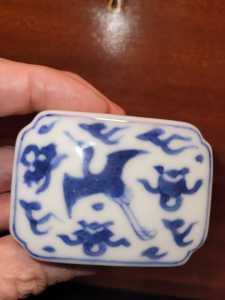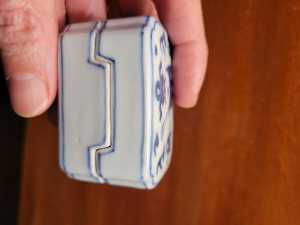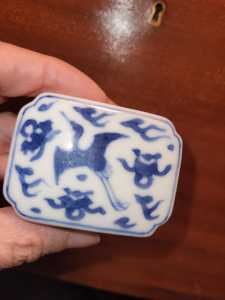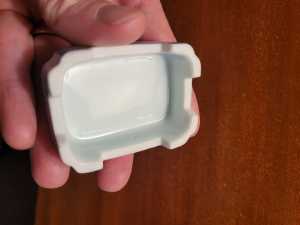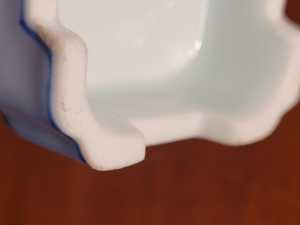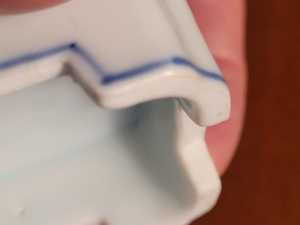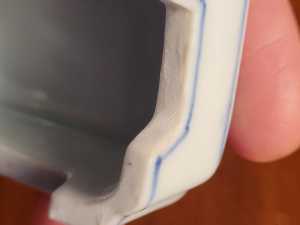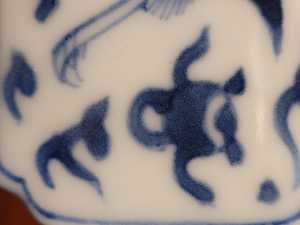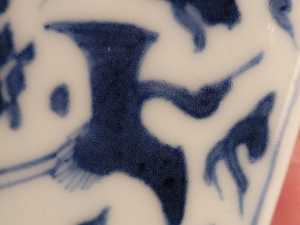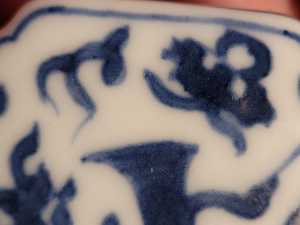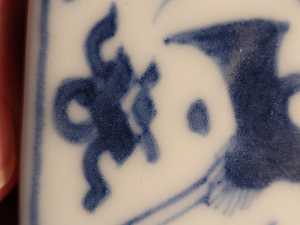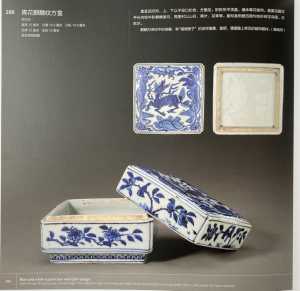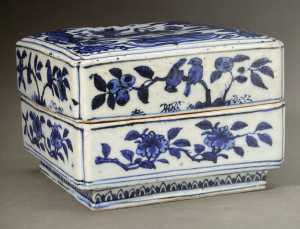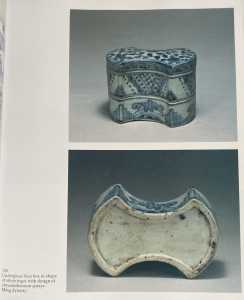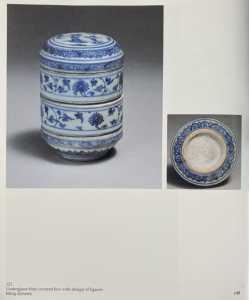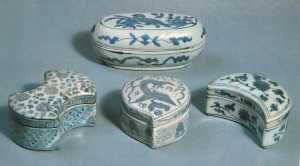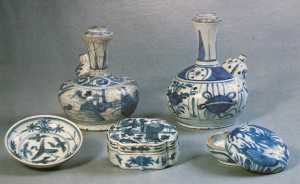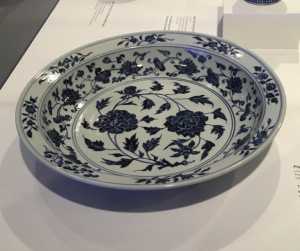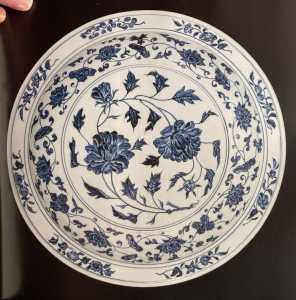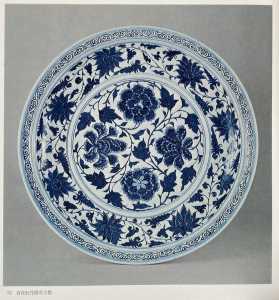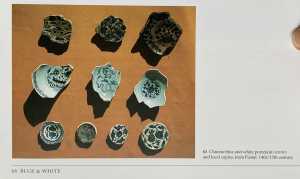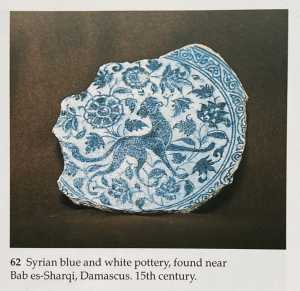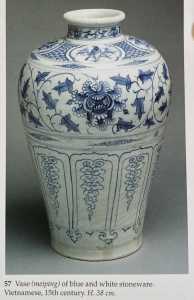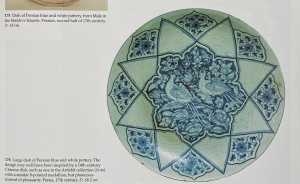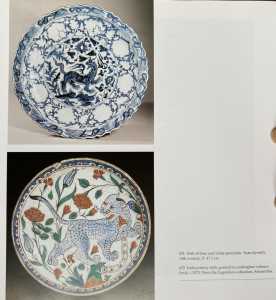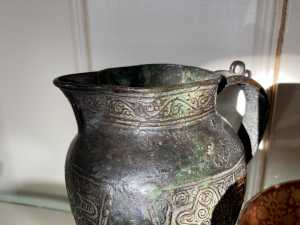The Chinese and Asian Art Forum. For Fans, Collectors and Dealers.
 Basic Rules For the BidAmount Asian Art Forum: Talk about whatever you want. You can even discuss and offer things that are for sale if they are authentic. Maximum image file size per post is 2 MB. Images of 700pxl x 700pxl are optimal if saved at a medium resolution. Be respectful of others and enjoy yourself. Click the YouTube link for a brief tutorial on using the forum. You can also EMBED Videos by cutting and pasting from You-Tube, Vimeo etc.
Basic Rules For the BidAmount Asian Art Forum: Talk about whatever you want. You can even discuss and offer things that are for sale if they are authentic. Maximum image file size per post is 2 MB. Images of 700pxl x 700pxl are optimal if saved at a medium resolution. Be respectful of others and enjoy yourself. Click the YouTube link for a brief tutorial on using the forum. You can also EMBED Videos by cutting and pasting from You-Tube, Vimeo etc.
NOTE: To post an item or add a new post, click open the category title from the FORUM LIST, and CLICK the Blue ADD TOPIC button.
@ming1449 Here it is. Previously I did not know what it was made for, but I now believe it to be a seal paste box. I recently have seen one other example made with this interlocking design, but I have not encountered others yet. I imagine there are many but I am not sure how to look them up. At any rate, I do feel that this was made with great care, and it is in perfect condition. And, I am not sure I have ever seen paste so perfectly white, as it is on the unglazed inside rim where the box fits together. Also, the lid fits perfectly whichever way you put it on, so it is made symmetrically. I'll be curious to hear your thoughts. Thanks! John
Hi - If memory serves me right, I think this piece has been have been discussed previously in another thread? ...
The crane and cloud motif was very popular during Jiajing due to its Daoist association and longevity symbolism, and continues in to the early Wanli period, but I can not recalling seeing an example which also includes three of the ‘ba boa’ or ‘Eight Precious Things’, sometimes referred to as the ‘Eight Treasures’, two of which are identifiable, the Jewel or Mirror and the Open Lozenge but the third, nearest the cranes head/neck is poorly drawn and difficult to identify ...
Attached images, mainly to compare body, glaze, cobalt, footrim and base characteristics ...
1/2:- Square box/cover, attributed to Wanli period, Gugong, Palace Museum, Beijing.
2/3:- Two boxes, both recovered from a Ming tomb, Tangwan township in Shanghai country, attributed to 16th century and both now Shanghai Museum ...
5/6:- Various shaped boxes/covers from an exhibition held at the National Museum, Singapore in 1978 and attributed to middle/late Ming, although the dating within this publication is much based on the knowledge of that time ...
Although some of these are burial, or possibly shipwreck, pieces, note the characteristics differences of theses examples to the body, glaze and base where shown, that the box, lower section, is always decorated with motifs and never blank and there is always a discernible footrim, whatever shape, all rather different to you piece ...
I would also add that on minyao examples lids/covers rarely fit perfectly, but this is also true of Imperial JJ/WL examples ...
So not Ming, IMO, but subjective based on the images and I could well be wrong. It needs to be seen/handled, preferably by an specialist, in such wares ...
I hope the above is of some help?
Stuart
@ming1449 Thanks, Stuart! You are correct, I had posted pictures of this box previously, but I wanted to revisit it from a different perspective and with new pictures, etc. I feel like the cobalt looks to have an antique appearance, with some piling effect, etc, so I don't feel it is modern. But the whiteness, perfect condition, etc, makes it seem new. I was hoping that might be a good combination of traits. And I have come across some ming/early Qing objects with bases that I felt have similar color and were also flat, although not on boxes like this. Perhaps it is a 19th or early 20th C interpretation? It would be nice if I could identify the impressed seal mark. It is a very subtle little touch and I find it curious. At any rate, now that Peter is back in business I will probably see what he has to say about this box and go from there. I'll keep you posted as i find out more. Cheers! John
@ming1449 Hi Stuart I was wondering if you know what this floral pattern is named on this Ming plate in the Brooklyn Museum. Thanks for any help.
Hi Brian -
The central design is flowering peonies, the cavetto with lotus scroll and the rim with eight alternating flower/fruits sprays of various types ...
Attached image of a very similar dish, D. 40.3cm, Calouste Culbenkian Foundation, Lisbon ...
Apologise for the poor quality, just photo-shot in artificial light ...
Stuart
@ming1449 FYI I sent pictures of the little box to Peter. He feels it is a well made contemporary piece done in a style that incorporates elements of Jiajing/Wanli times. So, as you suspected, it turns out to be a nifty little box, but of little age or value. Cheers! John
@ming1449 thanks Stuart so I’m reading this pattern was a well used pattern in the Yuan period and carried over to Ming. Can you think of another period this pattern would have been revived?
Hi Brian -
Yes, the peony motif was very popular during the Yuan, usually in continuous scroll form but very rarely drawn in the colied/circler composition as seen on these early Ming dishes ...
As for a continuation/revival of in later periods, which peony pattern type are you referring to, circular, continuous or individual sprays of? ...
Stuart
@ming1449 thanks Stuart for that piece of knowledge. To make a long story short. I’m trying to understand a few things with the Peony and blossom design. I’m seeing Yuan styles on Ming bowls the reason I believe they are Ming is I’m told Yuan did not glaze the bottom of their ceramics as Ming and later periods did. So if I find a Yuan pattern with no mark and a glazed bottom I must assume it is either Ming or a modern copy. Because from Ming until modern times Yuan style was not produced is this correct?
Hi Brian -
The Yuan painting style had an enormous and lasting influence not only on Chinese ceramics but also on the potters of many countries such pieces were exported to, with the Middle East and Vietnam making direct copies or adopting compositions of such ...
Attached images/descriptions of some of these pieces for comparison ...
The first image shows a large Yuan dish, D. 44.5cm, the central design of circular of four peony blossoms, each showing a different side. The central design on this piece is unique, no other Yuan dish is known with such and is, perhaps, the precursor to that seen on early Ming dishes ...
As to glazed bases:-
Yuan yuhuchunpings and ewers always have glazed bases, this was probably due to the shape and glazing method used for such vessels but yes, all other Yuan forms appear to have been produced with unglazed bases, although quite a number of the large guans, meipings and flasks show areas of glaze splashing or running to this area ...
I hope this is of some help ...
I find the image of the Syrian pottery very interesting Stuart, with the continuous scroll decoration around the rim being almost identical to that on Yuan through to mid- Ming period pieces.
Since posting photographs of my Song dynasty bronze wine pitcher, Peter has kindly informed me that in the book by T Misugi it shows line drawings of the four main continuous decorations used on Chinese blue and white ceramics from the Yuan to Ming period and that in addition to the scroll decoration on my pitcher, one of the other four patterns is the lotus flower decoration on the Song dynasty bronze wine pitcher in the Beijing Palace Museum collection,
https://m-digicol.dpm.org.cn/cultural/detail?id=5ecc7a64c3c847bbb1b2676b63fb6a65&source=0
As both bronzes seem to predate the blue and white ceramics, perhaps these were the inspiration for two of the continuous patterns used. I still am unable to find another similar form of bronze wine pitcher other than the one in the Beijing Palace Museum collection and mine, but if another example turns up it would be great if it had another one of the patterns!
Kind regards,
Jeremy
It's not so often we see iznik and persian ceramis. They are stunnung examples.
@johnshoe I'm wondering if this might not be a Japanese incense box (kôgô), used in connection with the tea ceremony. The impressed mark appears to be 春峰, which would be read shunpô (or less likely, in this case, harumine) in Japanese. I did a quick google of that name, and it did turn up an Inoue Shunpô 井上春峰, apparently a 20th century Kyoto potter. There also appears to be a Heian Shunpô 平安春峰, although it's not clear what the relationship is between the two - so you may have to do a little legwork on this. I did find however, an incense burner very similar in form to your box, signed Heian Shunpô, which I'll try to upload here. Good luck!
John Lee
Thanks for visiting "The BidAmount Asian Art Forum | Chinese Art"
If you sell on eBay, or have a shop feel free to post images and descriptions and links.
Check back often for discussion about the latest news in the Chinese art and antique world. Also find out about the latest Asian art auctions at Sotheby's, Christie's, Bonhams and Tajans.
Auction results for: fine porcelain, ceramics, bronze, jade, textiles and scholar's objects. As well as Japanese, Thai, Vietnamese and other Asian cultures.
Thank you,
Peter Combs
Topics and categories on The BidAmount Asian Art Forum | Chinese Art
Kangxi vases, Kangxi dishes and chargers, Kangxi ritual pieces, Kangxi scholar's objects, Qianlong famille rose, Qianlong enamels, Qianlong period paintings, Qianlong Emporer's court, Fine porcelain of the Yongzheng period. Chinese imperial art, Ming porcelain including Jiajing, Wanli, Xuande, Chenghua as well as Ming jades and bronzes.
The BidAmount Asian Art Forum | Chinese Art
A free Asian art discussion board and Asian art message board for dealers and collectors of art and antiques from China, Japan, Korea, Thailand, Cambodia, Vietnam and the rest of Asia. Linked to all of the BidAmount Asian art reference areas, with videos from plcombs Asian Art and Bidamount on YouTube. Sign up also for the weekly BidAmount newsletter and catalogs of active eBay listing of Chinese porcelain, bronze, jades, robes, and paintings.
The art of calligraphy - and for the ancient Chinese it certainly was an art - aimed to demonstrate superior control and skill using brush and ink. Calligraphy established itself as one of the major Chinese art forms during the Han dynasty (206 BCE - 220 CE), and for two millennia after, all educated men were expected to be proficient at it.
The Museum’s collections of Asian art span nearly five millennia and encompass the cultures of China, the Himalayas, India, Japan, Korea, and Southeast Asia. In 2007, the Museum launched an initiative to create dedicated galleries for the collection, beginning with a gallery for the arts of Korea ...
Chinese art is full of symbolism, in that artists typically seek to depict some aspect of a totality of which they are intuitively aware.
China Online Museum is the finest online museum of Chinese art. It features Chinese calligraphy, painting, ceramics, bronzes, carving, and other artworks.
Chinese Ceramics & Works of Art. Overview Upcoming auctions Contacts Auction results ... Christie’s sales of Chinese ceramics and works of art showcase centuries of Chinese history. Held throughout the year in London, New York, Paris and Hong Kong, they attract a wide audience of collectors and connoisseurs vying for pieces as diverse as ...
Explore Asian Art Week. Contact the Specialist Department. Chinese Paintings ... Senior Specialist, Head of Sale. [email protected]. Tel:+1 212 641 5760. Bid in-person or online for the upcoming auction:Fine Chinese Paintings on 10 September 2019 at New York. Bid in-person or online for the upcoming auction:Fine Chinese Paintings on 10 ...
Discover an abundance of must-see art from all corners of a vast continent at Christie’s NY Asian Art Week. From contemporary classical and Chinese paintings to works with exemplary provenance from the Art Institute of Chicago, our Rockefeller Paza galleries will be full of ancient treasures and contemporary masterworks in a salute to the vibrant arts of Asia.
Sold to benefit The Art Institute of Chicago’s Asian Art Acquisition Fund, the sale features 84 lots with a focus on Ming and Qing porcelains, and offers a rare insight into the taste for collecting Chinese ceramics and works of art in the Midwest from the end of the 19th century through the 1980s. Highlights include two Wanli wucai garlic-head vases, a Qianlong mark and period, blue and ...
Specialist, Chinese Paintings, Christie's London Dr Malcolm McNeill is a Specialist in Chinese Paintings at Christie’s, based in London. He previously worked as an assistant curator of the Chinese collections and the Victoria and Albert Museum in London, as a researcher at the British Museum, and as a translator and tour guide at the National Palace Museum in Taipei.
The Christie's Education 2020 Conference: The Chinese Art Market 18 Jun 2019 Christie’s Education is delighted to announce our first international academic conference in Asia which will take place in Hong Kong from 26-27 November 2020 at the Hong Kong Convention and Exhibition Centre and will run in parallel with Christie’s Hong Kong Autumn Auctions.
The summer Chinese Art sale in Hong Kong will feature works of art from several private collections, including Qing porcelains and textile from the collection of the legendary Chinese art dealer A. W. Bahr (1877–1959), fine gilt bronze Buddhist sculptures from an old Hong Kong collection, an East Asian collection of Qing dynasty wine cups and jades, and a Japanese collection of Song ceramics ...
Sotheby's Chinese Works of Art Department holds two auctions each year in London, New York, Hong Kong and Paris.
Chinese Art - View Auction details, bid, buy and collect the various artworks at Sothebys Art Auction House.
With more than 340 Chinese works of art dating from the Neolithic to the Republic periods, highlights of this sale include a selection of Qing Imperial monochromes from the collection of Arnold and Blema Steinberg, early ceramics from the Art Institute of Chicago and Chinese porcelain and works of art from the collection of Henry Arnhold.
Results: Sotheby's Asia Week achieved $52.4 million in six strong auctions, exceeding pre-sale estimates. With 76.5% of lots sold and 60.3% of lots surpassing high estimates, the Asian art sales at Sotheby's indicate continued collector interest in the finest works of art from China, India and and the Himalayas.
Today's sale of Important Chinese Art will proceed as planned with sessions at 10 AM and 2 PM EDT. Sotheby's will be monitoring the weather conditions throughout the day and will be available to coordinate alternative bidding options should conditions make it difficult for clients to attend the auction in person.
Bonhams Chinese Art department is renowned for offering the finest works of art representing the richness and breadth of China's artistic heritage, particularly Imperial porcelain, white and spinach green jades, cloisonné and Buddhist art. Specialised international auctions are held globally, including London, Hong Kong and San Francisco.
Bonhams : Chinese Works of Art We use cookies to remember choices you make on functionality and personal features to enhance your experience to our site. By continuing to use our site you consent to the use of cookies. Please refer to our privacy and cookie policies for more information.
Bonhams Fine Art Auctioneers & Valuers: auctioneers of art, pictures, collectables and motor cars. We use cookies to remember choices you make on functionality and personal features to enhance your experience to our site. By continuing to use our site you consent to the use of cookies. ... Chinese Art (US) General enquiries
Bonhams : Fine Chinese Art We use cookies to remember choices you make on functionality and personal features to enhance your experience to our site. By continuing to use our site you consent to the use of cookies. Please refer to our privacy and cookie policies for more information.
Bonhams Fine Art Auctioneers & Valuers: auctioneers of art, pictures, collectables and motor cars Bonhams : Asian Art We use cookies to remember choices you make on functionality and personal features to enhance your experience to our site.
Bonhams are international auctioneers of fine Chinese and Japanese art. We specialise in rare Imperial and Export Chinese ceramics and works of art, as well as Japanese ceramics, fine and decorative works of art from the Neolithic Period to the 20th century. View on map
Bonhams Fine Art Auctioneers & Valuers: auctioneers of art, pictures, collectables and motor cars. We use cookies to remember choices you make on functionality and personal features to enhance your experience to our site. By continuing to use our site you consent to the use of cookies. ... Asian Art Bonhams. Work. 22 Queen St.
